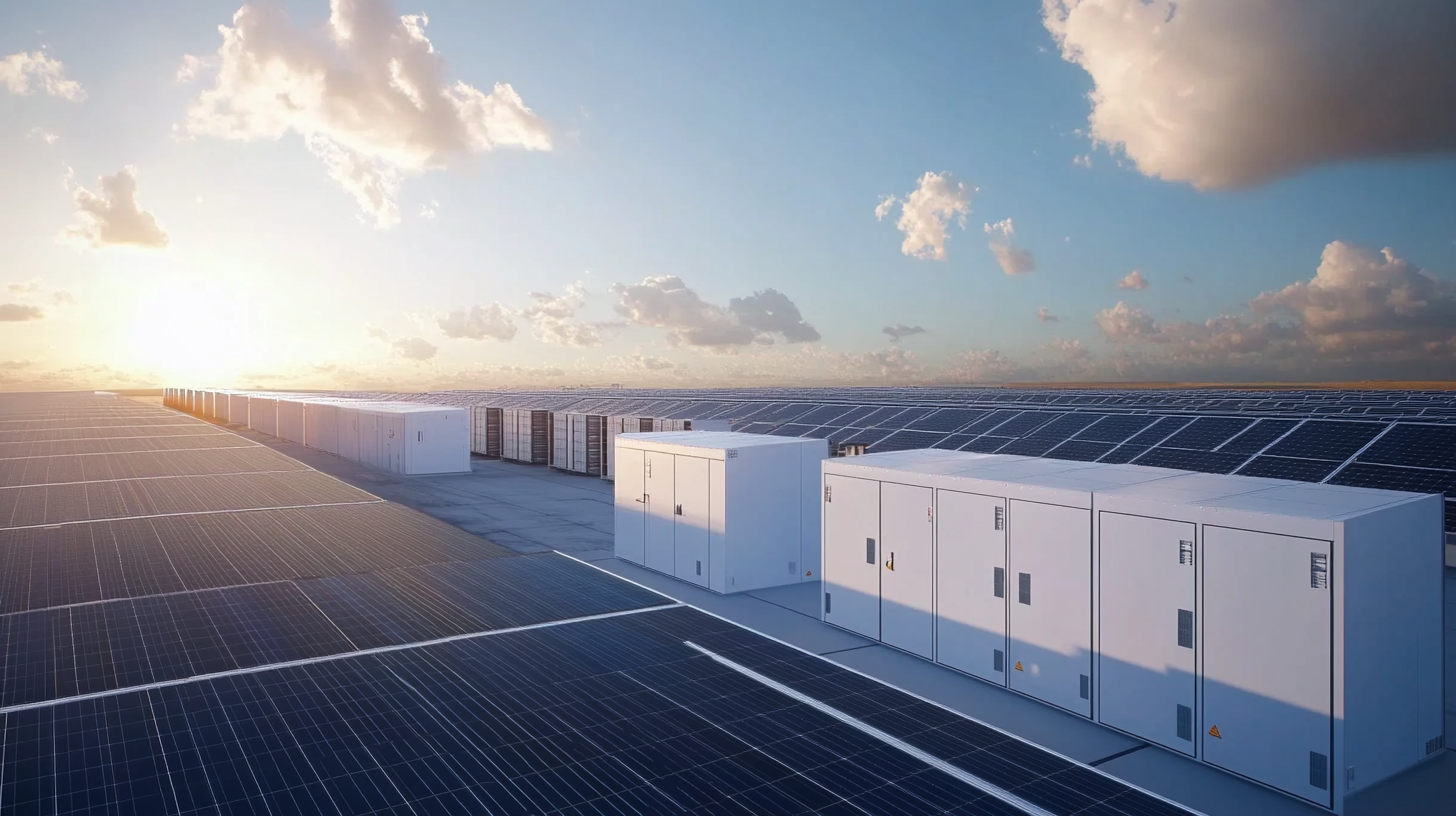In an era where sustainability and renewable energy solutions are at the forefront of global discussions, the significance of the Solar Storage System has never been more apparent. As nations grapple with the challenges of climate change and the urgent need to transition to cleaner energy sources, the demand for efficient solar storage solutions is witnessing unprecedented growth. This blog will explore how a leading manufacturer is positioning itself in the global market, showcasing innovations and best practices that are propelling it to the forefront of solar storage technology. With a commitment to quality and sustainability, this manufacturer is not only meeting the growing demands for solar energy but is also setting standards in export capabilities. Join us as we delve into the strategies and technologies that are shaping the future of Solar Storage Systems on a global scale.

The advent of solar storage technology is revolutionizing the energy landscape, providing innovative solutions for sustainable power management. Advances in battery efficiency and energy management systems are enabling consumers to harness solar energy more effectively, ensuring a reliable power supply even during peak demand or cloudy days. As the global market for these technologies expands, manufacturers are focusing on integrating smarter and more efficient storage options to accommodate this growth.
Tip: Consider investing in smarter energy management systems that can optimize your energy usage based on storage levels and consumption patterns. This can help you maximize the benefits of your solar storage system while reducing dependency on the grid.
As innovations continue to emerge, the industry is seeing enhanced energy density and reduced costs, making solar storage systems more accessible than ever. These improvements not only cater to large-scale installations but also empower homeowners and small businesses to adopt renewable energy solutions.
Tip: When exploring solar storage options, prioritize systems with advanced reporting capabilities. These tools allow you to monitor your energy usage in real-time and adjust your consumption habits, leading to greater energy efficiency and cost savings.
| Product Name | Battery Type | Capacity (kWh) | Efficiency (%) | Export Markets |
|---|---|---|---|---|
| SolarMax Pro 2000 | Lithium-ion | 20 | 95 | USA, Germany, Australia |
| EcoStorage Lite 1000 | Lead-acid | 10 | 85 | UK, Canada, Japan |
| PowerStore Ultra 5000 | Lithium Iron Phosphate | 50 | 98 | France, China, Brazil |
| SmartCharge 1500 | Nickel Manganese Cobalt | 15 | 90 | Italy, South Africa, UAE |
| GreenCell Max 3000 | Flow Battery | 30 | 92 | Netherlands, India, Mexico |
The global demand for solar storage systems is witnessing unprecedented growth, driven by the increasing emphasis on renewable energy and sustainability. As countries strive to transition away from fossil fuels, solar energy has emerged as a leading contender for clean power, necessitating effective storage solutions to optimize energy utilization. This trend highlights a significant opportunity for manufacturers to innovate and expand their solar storage product lines to meet diverse consumer needs.
Furthermore, as technological advancements continue to enhance efficiency and reduce costs, solar storage systems are becoming more accessible to both residential and commercial users. The integration of advanced battery technologies and smart grid solutions is transforming how energy is stored and used, creating a dynamic market environment ripe for investment. Companies that anticipate these trends and adapt their strategies accordingly will be poised to lead the industry and capitalize on the expanding global market for solar storage systems.
In the competitive landscape of solar storage system manufacturing, quality assurance is paramount, especially for firms focusing on export markets. Maintaining high standards not only enhances product reliability but also builds brand reputation globally. Companies must establish rigorous testing protocols that adhere to international quality standards. Regular audits and feedback loops can significantly contribute to continuous improvement in manufacturing processes.
Tip 1: Implement a quality management system (QMS) that complies with ISO 9001 standards. This framework provides a structured approach to managing quality and helps in consistently meeting customer and regulatory requirements.
Moreover, investing in employee training and development plays a crucial role in upholding manufacturing standards. Well-trained employees are more adept at identifying potential issues early in the production line, which can prevent costly errors and ensure that every unit meets the required specifications.
Tip 2: Foster a culture of quality among your workforce. Encourage employees to take ownership of their work and provide them with the tools and incentives to report quality concerns proactively. This not only improves product quality but also enhances team morale.

In today's rapidly evolving renewable energy sector, strategic partnerships have become a cornerstone for companies aiming to excel in international markets. By collaborating with local distributors and technology providers, solar storage system manufacturers can leverage regional expertise and gain a competitive edge. These alliances not only facilitate access to new markets but also enhance innovation through shared knowledge and resources. This collaborative approach enables manufacturers to tailor their products to meet specific market demands, ensuring a strong foothold across different geographies.
Furthermore, partnering with research institutions and universities can drive technological advancements in solar storage systems. Such collaborations allow companies to stay ahead of the curve by incorporating cutting-edge technology and sustainable practices into their manufacturing processes. By pooling intellectual resources, these strategic alliances create a robust environment for development and innovation, supporting the goal of leading the global market in solar storage solutions. Ultimately, these partnerships are essential for navigating the challenges of global trade and capitalizing on emerging opportunities in the renewable energy landscape.

As the world shifts towards renewable energy sources, solar storage systems play a crucial role in enhancing the sustainability and environmental impact of green energy. These systems not only store excess energy generated during sunny days but also ensure reliable power supply during periods of low generation. By effectively capturing and utilizing solar energy, we can significantly reduce our reliance on fossil fuels, thereby decreasing greenhouse gas emissions and contributing to a cleaner environment.
Moreover, solar storage systems empower consumers and businesses alike to optimize their energy usage. With advancements in technology, modern storage solutions allow for greater energy efficiency and reduced costs over time. This paradigm shift toward sustainable energy storage aligns perfectly with global efforts to combat climate change and promote environmentally friendly practices. By investing in solar storage technology, we can create a greener future and lead the way in sustainable energy solutions that benefit both the planet and its inhabitants.
The following chart illustrates the projected growth of the solar storage system market over a five-year period. This growth reflects the increasing demand for sustainable and environmentally friendly energy solutions worldwide.